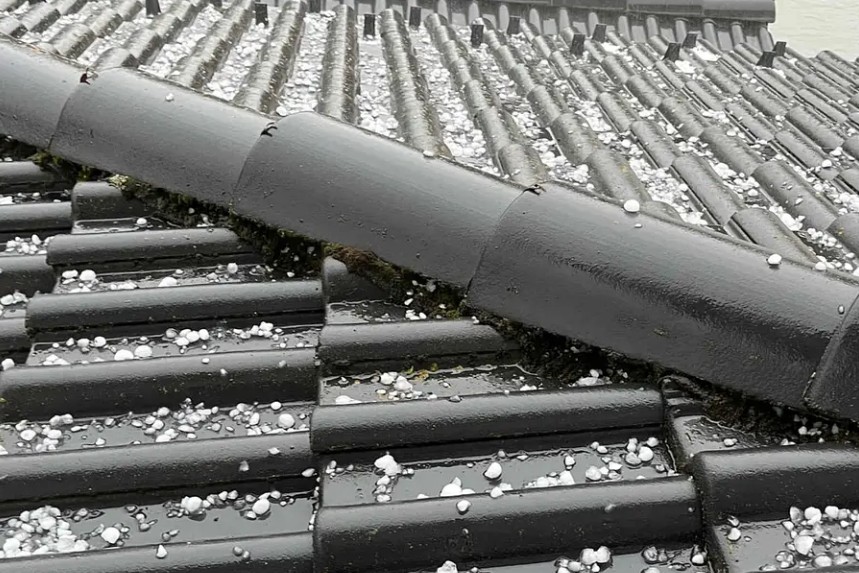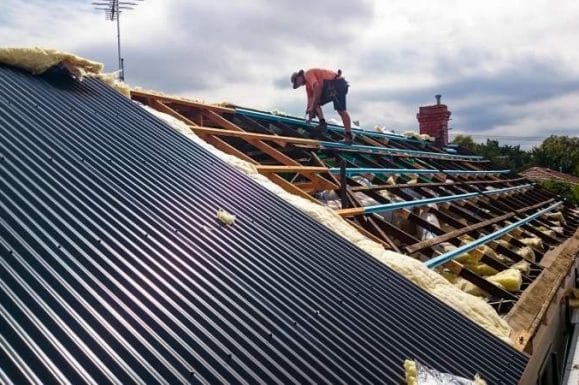The Importance of Repairing Sheet Metal Roofs in Cyclonic Areas, Especially in Tropical North Queensland
Tropical North Queensland (TNQ) is renowned for its stunning beaches, lush rainforests, and vibrant ecosystems. However, it is also an area highly susceptible to cyclones and severe weather conditions, making the repair and maintenance of sheet metal roofs critical to ensuring the safety and longevity of buildings. Sheet metal roofs, particularly those in cyclonic regions, face significant challenges due to the intense wind forces, heavy rainfall, and the corrosive effects of the tropical environment. This essay explores the importance of repairing sheet metal roofs in cyclonic areas, with a focus on the unique conditions faced in Tropical North Queensland.
The Vulnerability of Sheet Metal Roofs in Cyclonic Conditions
Cyclones are an ever-present risk in Tropical North Queensland, with the region experiencing frequent tropical storms and cyclonic events, especially during the wet season. Cyclones produce wind speeds that can exceed 200 km/h, which can wreak havoc on building structures, particularly roofs. Sheet metal roofs, which are common in Australian homes due to their affordability, durability, and resistance to fire, can be highly vulnerable during such intense weather conditions.
One of the primary issues with sheet metal roofs in cyclonic areas is their susceptibility to damage from flying debris and strong winds. Cyclones generate wind forces that can lift roofing materials, tear off sections of roofing, or cause the fasteners to fail. Even minor damage to a sheet metal roof, such as the loosening of a single panel, can compromise the entire roofing system. This is because, in cyclonic conditions, even small leaks or gaps can rapidly escalate, allowing rainwater to infiltrate the structure and cause significant interior damage.
Additionally, sheet metal roofing materials, particularly those not treated with adequate corrosion-resistant coatings, are vulnerable to the corrosive effects of tropical humidity and salt-laden air. Over time, corrosion can weaken the roofing material, making it more prone to damage during cyclonic events. As a result, it is vital to ensure that any damaged or corroded sections of the roof are repaired promptly.
Safety Concerns in Cyclonic Areas
The safety of residents is a significant concern in cyclonic areas, and a compromised roof can put people at serious risk. The structural integrity of a building is primarily reliant on the roof, which is designed to withstand extreme weather conditions. If a sheet metal roof becomes detached or damaged, it can create a dangerous situation for occupants, particularly when wind speeds escalate during a cyclone. Flying debris or falling sections of roof can pose immediate threats to people within the building or those in close proximity to it.
In addition to structural damage, water ingress is a primary concern following roof damage in a cyclone. The torrential rainfall associated with cyclones can easily flood the interior of a building if the roof is not intact. Water damage to ceilings, walls, electrical systems, and insulation can lead to long-term health risks, such as mold growth and electrical hazards. Therefore, timely repairs are essential to prevent such secondary issues and to maintain a safe living environment.

The Role of Roof Repair in Minimizing Long-Term Damage
In the aftermath of a cyclone or severe storm, repairing sheet metal roofs promptly is crucial in preventing further structural damage and financial losses. Roof damage, if left unchecked, can lead to significant degradation of the entire building over time. For example, prolonged exposure to water ingress can weaken the foundation, cause wood rot, and lead to the deterioration of insulation materials. Over time, this can increase the cost of repairs, and in some cases, render the building uninhabitable.
Furthermore, by addressing roof damage immediately, homeowners can avoid more expensive repairs in the future. Fixing minor issues like loose panels or rusted fasteners early on prevents them from escalating into major structural problems. In cyclonic areas where roofs are constantly exposed to harsh weather conditions, regular inspection and prompt repair of any damage are essential to prolong the lifespan of the roof and the building as a whole.
Choosing the Right Materials for Cyclonic Conditions
In cyclonic areas, not all sheet metal roofing materials are created equal. Homeowners must select materials that are specifically designed to withstand the unique challenges of Tropical North Queensland’s environment. For example, Colorbond steel, a popular roofing material in Australia, is specifically engineered for durability in coastal and cyclonic conditions. Colorbond roofing is coated with a protective layer to resist corrosion, which is a critical consideration in tropical regions where the salty air can rapidly corrode unprotected metal.
Additionally, the installation process plays a crucial role in ensuring that the roof can withstand cyclonic winds. Properly secured roofing panels and fasteners that meet Australian standards for wind-resistance are essential for ensuring that the roof can resist the intense pressures exerted by high winds. This includes using specialized cyclone-rated clips and screws to secure the panels in place. Regular inspection of these fasteners is necessary to ensure that they remain secure and effective in the event of a cyclone.
The Economic Impact of Roof Damage in Cyclonic Areas
The economic consequences of roof damage following cyclones can be severe. In addition to the immediate costs of roof repair, businesses and homeowners in affected areas may experience prolonged disruptions. For businesses, a damaged roof can lead to temporary closures or loss of inventory, resulting in significant financial losses. Similarly, homeowners may face costs related to emergency repairs, temporary accommodation, and potential insurance claims.
Moreover, roof damage that is not properly repaired can reduce the value of the property, as prospective buyers may view the property as high-risk or in need of extensive future repairs. This can further impact the economic stability of the region, particularly in areas that rely on tourism and residential developments. Proper roof maintenance and repairs can help to mitigate these costs, allowing property owners to maintain the value of their assets.
Conclusion
The repair and maintenance of sheet metal roofs in cyclonic areas, especially in Tropical North Queensland, are essential for ensuring the safety, structural integrity, and longevity of buildings. Cyclonic conditions pose unique challenges for roofing materials, and prompt repairs can prevent further damage and financial losses. The corrosive effects of the tropical environment, combined with the intense forces generated by cyclones, necessitate regular roof inspections and repairs to avoid catastrophic consequences. By using appropriate materials, securing roofs properly, and addressing damage quickly, property owners can safeguard their homes and businesses against the harsh weather conditions prevalent in Tropical North Queensland.
References
- Australian Building Codes Board. (2021). Building Code of Australia (BCA). Retrieved from https://www.abcb.gov.au/
- Queensland Government. (2020). Cyclone Preparedness. Retrieved from https://www.qld.gov.au/emergency
- BlueScope Steel. (2021). The Durability of Colorbond Steel in Cyclonic Conditions. Retrieved from https://www.bluescopesteel.com.au
